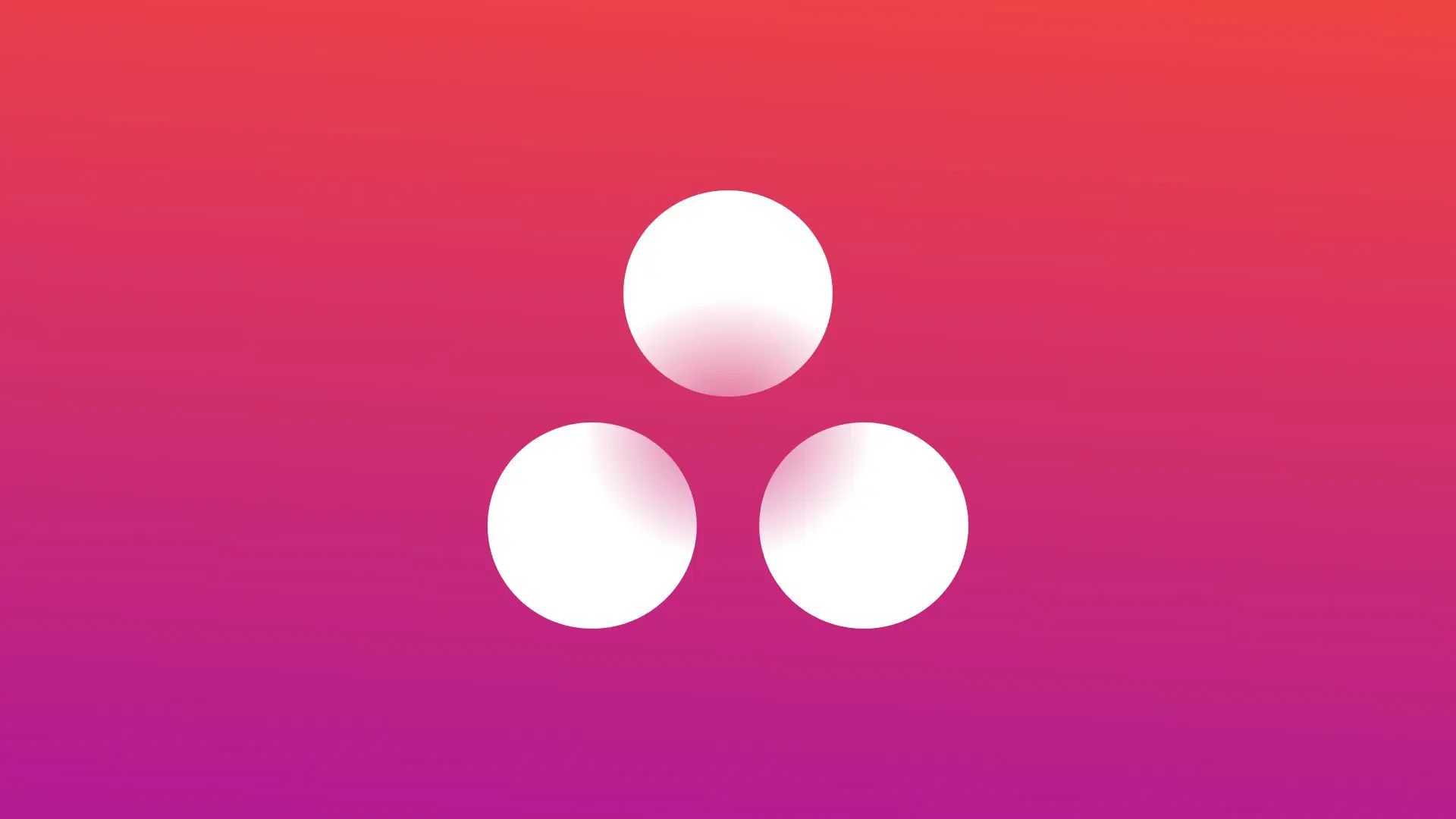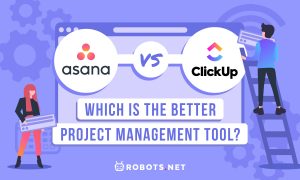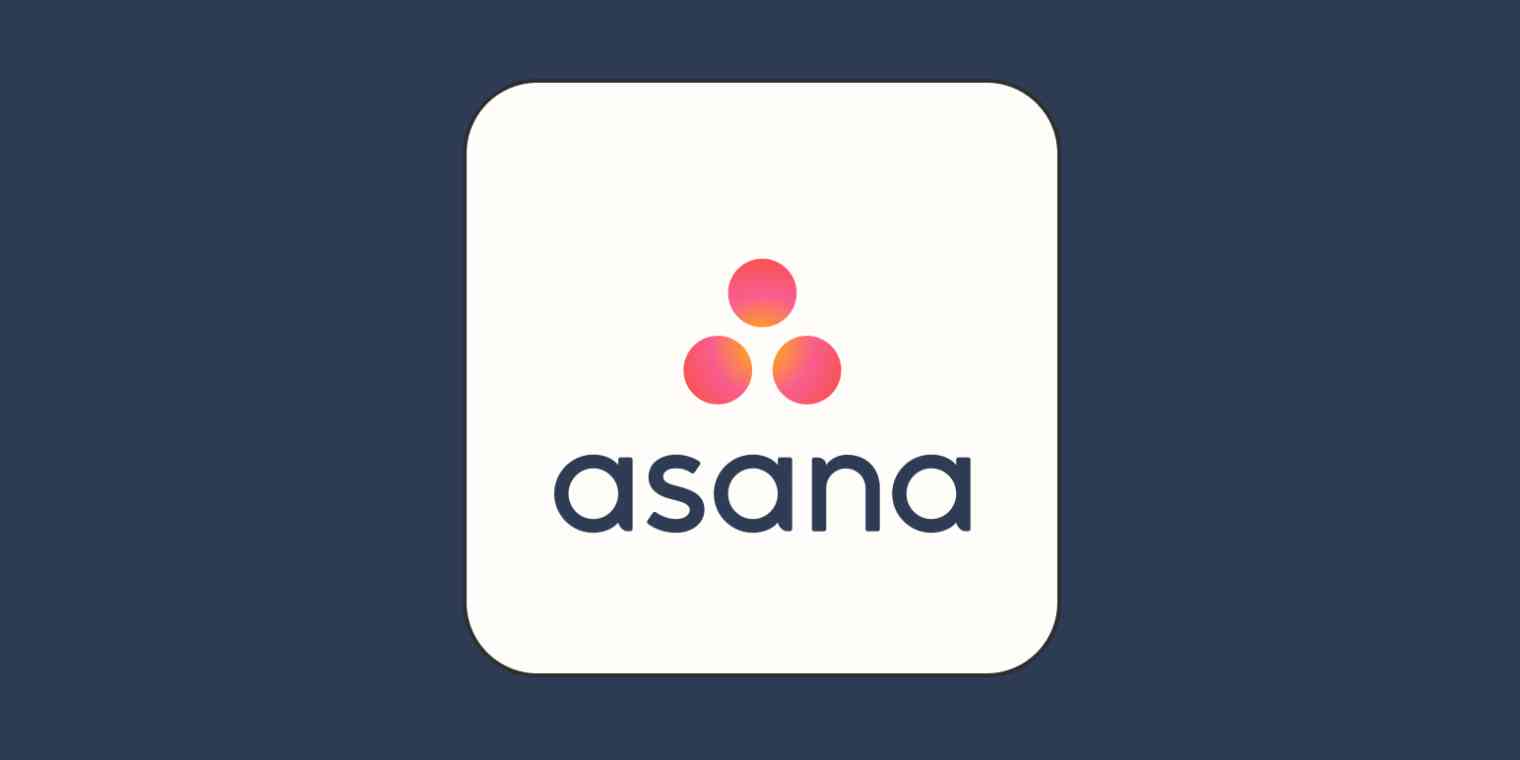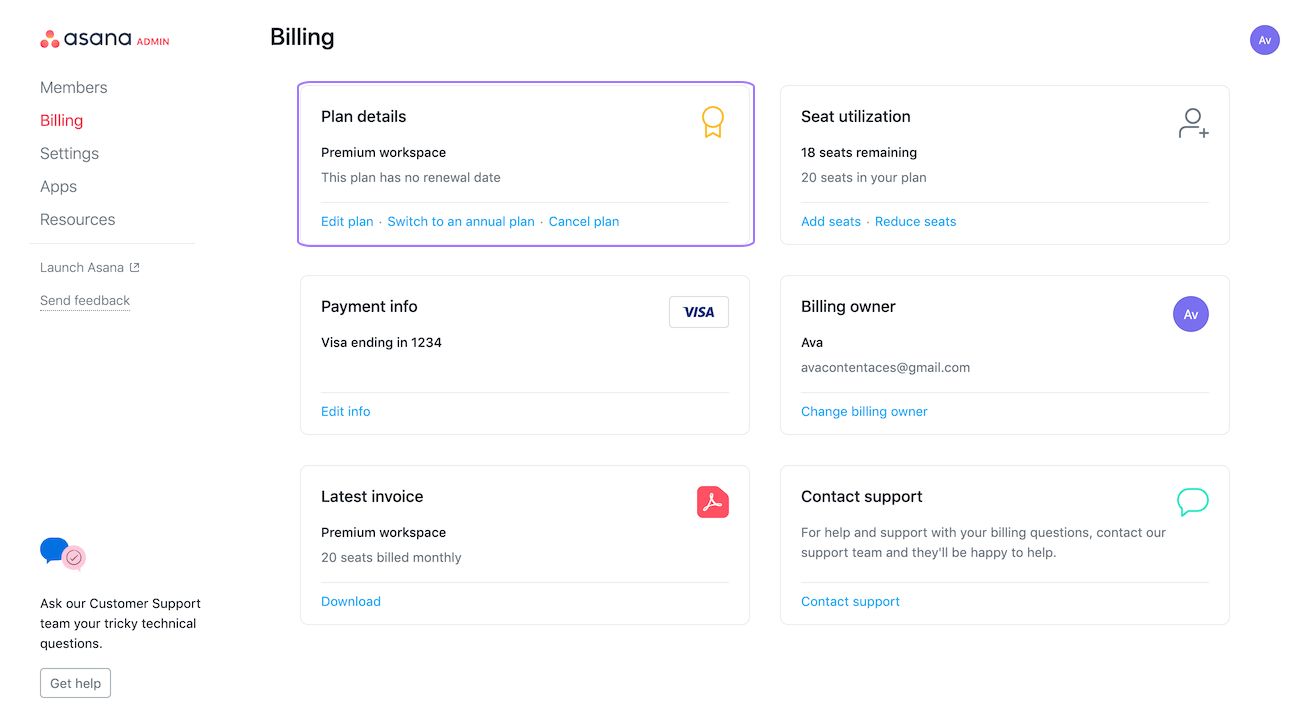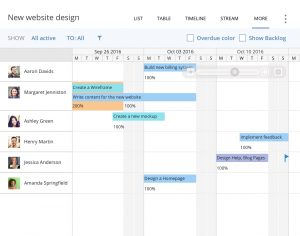Introduction
Asana is a popular project management tool that helps teams collaborate and manage their tasks efficiently. With its user-friendly interface and robust features, Asana has gained a reputation for streamlining project workflows and boosting productivity.
Whether you’re a small business owner, a project manager, or a freelancer, understanding the cost of using Asana is crucial in determining if it’s the right fit for your needs and budget. In this article, we will explore the different pricing options and tiers offered by Asana, as well as additional costs you may incur. By the end, you’ll have a clearer understanding of how much Asana may cost you and whether it provides good value for your money.
Before we dive into the pricing details, it’s important to note that Asana offers a free plan, which is ideal for individuals or small teams who have basic project management needs. The free plan includes essential features such as task management, basic project views, and limited integration options.
However, as your team grows and your project requirements become more complex, you may find that upgrading to Asana’s premium plan is necessary. The premium plan offers additional features such as advanced reporting, timeline view, custom fields, and priority support, which can greatly enhance your project management capabilities.
Now that we have an overview of the free and premium plans, let’s delve into the pricing tiers offered by Asana.
Free Plan
The free plan offered by Asana is an excellent option for individuals or small teams who have basic project management needs. It provides a solid foundation for organizing and tracking tasks effectively without any cost. Here are some key features of the Asana free plan:
- Task Management: With the free plan, you can create and assign tasks to team members, set due dates, and add comments or attachments.
- Basic Project Views: You can visualize your tasks and projects in a list view or a Kanban board-style view.
- Collaboration Tools: The free plan allows you to collaborate with your team by commenting on tasks, mentioning members, and receiving notifications.
- Integrations: While the free plan offers limited integration options, you can still connect Asana with some popular apps like Google Drive, Slack, and Microsoft Teams.
These features are designed to help you get started with project management and experience the core functionalities of Asana. However, it’s worth noting that the free plan has its limitations. For instance, it doesn’t include advanced features like time tracking, custom fields, or dependencies, which could be crucial for certain types of projects.
Additionally, the free plan has some usage restrictions. For example, you can only have up to 15 team members and create up to 100 projects. If you exceed these limits or require more advanced capabilities, you may need to consider upgrading to Asana’s premium plan.
While the free plan is a great way to try out Asana and manage small projects, it’s important to evaluate your specific needs and determine if the available features are sufficient for your team’s goals. If you find that the free plan falls short, upgrading to the premium plan may be the next logical step.
Premium Plan
If the features offered in the free plan do not fully meet your project management needs, upgrading to Asana’s premium plan can provide you with a range of advanced capabilities and enhanced functionality. Let’s take a closer look at what the premium plan has to offer:
- Advanced Reporting: With the premium plan, you gain access to powerful reporting features that provide valuable insights into your team’s productivity, project progress, and resource allocation. Generate comprehensive reports to track key metrics and make data-driven decisions.
- Timeline View: Visualize your project’s timeline using the intuitive timeline view. This feature allows you to set dependencies between tasks, identify project bottlenecks, and ensure smooth project execution.
- Custom Fields: Tailor Asana to suit your specific project requirements by creating custom fields. Customize task attributes, such as priority, status, or project-specific parameters, to align with your unique workflow.
- Priority Support: As a premium user, you receive priority support from Asana’s customer service team. If you encounter any issues or have questions, you can expect faster response times and dedicated assistance.
These additional features offer significant value to teams working on complex projects or those who require more advanced project management capabilities. The premium plan is particularly beneficial for larger teams or organizations that need to manage multiple projects simultaneously, track performance metrics, and collaborate seamlessly.
It is important to note that the premium plan comes at a cost, and the pricing structure for Asana’s premium offering is based on a per-user basis. The cost per user decreases as you add more team members, making the premium plan more cost-effective for larger teams.
Upgrading to the premium plan also unlocks priority access to new features and updates released by Asana, ensuring that you stay at the forefront of project management trends and technologies.
Considering the enhanced functionality and flexibility offered by the premium plan, it is worth evaluating your team’s specific requirements and budget to determine if investing in the premium plan aligns with your goals and project management needs.
Pricing Tiers
Asana offers different pricing tiers to cater to the diverse needs of teams and organizations. The pricing is based on a per-user basis, meaning you pay for each team member who will be actively using Asana. Let’s explore the different pricing tiers available:
- Basic: The Basic tier is the free plan that we discussed earlier. It’s a great starting point for small teams or individuals who want to experience the core features of Asana without incurring any costs.
- Premium: The Premium plan, as mentioned earlier, offers advanced features and functionality. The cost per user starts at $10.99 per month when billed annually.
- Business: The Business plan includes everything in the Premium plan and adds features like priority support, advanced integrations, and more. The cost per user starts at $24.99 per month when billed annually.
- Enterprise: The Enterprise plan is designed for large organizations with complex project management needs. It offers additional security features, dedicated customer success managers, and advanced admin controls. The pricing for the Enterprise plan is customizable based on the specific requirements of your organization. You can contact Asana’s sales team for more details.
It’s worth noting that the prices mentioned above are for annual billing. Asana also offers monthly billing options, but the per-user cost is slightly higher compared to the annual billing option.
When considering the different pricing tiers, it’s important to assess the specific needs of your team, the functionalities you require, and the number of users who will actively use Asana. This evaluation will help you determine which pricing tier provides the best value for your investment.
Remember, it’s always a good practice to start with the free plan and then upgrade to a premium plan as your team grows or your project management requirements become more complex. Asana’s pricing tiers give you the flexibility to scale your subscription based on your team’s evolving needs.
Monthly vs. Annual Billing
Asana offers the flexibility to choose between monthly and annual billing options for their premium and business plans. Each billing cycle has its advantages and considerations. Let’s explore the differences between monthly and annual billing:
Monthly Billing:
If you opt for monthly billing, you pay a fixed amount per user each month. This option allows you to have more flexibility and make shorter commitments. Here are a few key considerations with monthly billing:
- Short-Term Commitment: With monthly billing, you have the flexibility to upscale or downscale your subscription on a monthly basis. This is beneficial if you have a fluctuating team size or if you want to test the waters before committing to a longer-term plan.
- Higher Cost: Generally, the cost per user for monthly billing is higher compared to annual billing. This is because monthly billing incurs additional administrative fees and is considered a shorter-term arrangement.
- Less Cost Commitment: Monthly billing requires a shorter financial commitment upfront. This can be advantageous for teams with limited budgets or those who prefer a pay-as-you-go model.
Annual Billing:
Annual billing involves paying for the entire year upfront. Although this requires a larger initial investment, it offers several benefits:
- Cost Savings: When you choose annual billing, you often receive a discounted rate per user compared to monthly billing. This can result in significant cost savings over time, especially for larger teams or long-term commitments.
- Consistent Budgeting: With annual billing, you can budget your expenses more accurately since you know the fixed cost for the entire year in advance. This can be beneficial for financial planning purposes.
- Access to Premium Features: Annual subscribers typically have access to premium features and updates as soon as they’re released. This ensures that you’re always up-to-date with the latest enhancements and advancements in Asana.
When deciding between monthly and annual billing, it’s important to consider factors such as your budget, team size, long-term commitment, and cash flow. Assess which billing option aligns with your needs and preferences to make an informed decision.
Keep in mind that Asana allows you to switch between monthly and annual billing plans at any time, providing you with the flexibility to adjust your subscription based on your evolving requirements.
Additional Costs
While the pricing tiers we discussed earlier cover the base costs of using Asana, there may be additional costs to consider depending on your specific needs and preferences. Here are some potential additional costs you may encounter when using Asana:
- Integrations: While Asana offers integrations with popular apps like Google Drive and Slack, some integrations may require separate subscriptions or incur additional costs. Before integrating other tools with Asana, make sure to check if there are any associated fees.
- Add-Ons and Upgrades: Asana occasionally releases add-ons or upgrades that provide enhanced functionality or specialized features. These may come at an additional cost above and beyond your existing subscription. Evaluate these options carefully to see if they align with your needs and are worth the investment.
- Training and Consultation: If you require customized training sessions or consultation to maximize your team’s productivity with Asana, you may need to invest in specialized training programs or hire consultants. These costs would be separate from the core Asana subscription.
- Data Storage: While most basic storage needs are covered within your Asana subscription, if you have extensive data storage requirements or need to store large files, you may need to purchase additional storage space from Asana or integrate with a separate file storage solution.
- Enterprise-Level Features: For organizations with unique or complex requirements, Asana’s Enterprise plan provides advanced features and dedicated support. The pricing for the Enterprise plan is customizable and will be based on your specific needs and customizations. Contact Asana’s sales team for more information.
It’s essential to consider these potential additional costs when evaluating the overall cost of using Asana. Assess your team’s specific requirements and determine if any of these additional costs are necessary to achieve your desired functionality and productivity.
Remember, while Asana offers a comprehensive set of features within its pricing tiers, additional costs may arise based on your specific needs, integrations, or desired enhancements. Take the time to thoroughly evaluate and plan for these potential additional expenses to avoid any surprises along the way.
Cost Comparison with Competitors
When considering the cost of using Asana, it’s important to compare it with other project management tools in the market. Several competitors offer similar features and functionalities, each with their own pricing structures. Let’s explore a cost comparison between Asana and some popular competitors:
- Trello: Trello is known for its simple and visual Kanban-style interface. It offers a free plan with basic features and a Business Class plan starting at $12.50 per user per month billed annually. While Trello’s pricing may be more affordable for small teams, it may lack the advanced project management features offered by Asana.
- Monday.com: Monday.com is a versatile project management tool with customizable workflows. They offer a range of pricing plans, starting at $10.80 per user per month billed annually for their Basic plan. However, as you scale up and require more advanced features, the cost can increase significantly, potentially exceeding the price of Asana’s premium plan.
- Wrike: Wrike is a comprehensive project management solution that caters to teams of all sizes. Their pricing starts at $9.80 per user per month billed annually for their Professional plan. As your team grows or demands more advanced features, Wrike’s pricing can increase. It’s essential to take into account the specific features you require when comparing it to Asana’s pricing.
When comparing the costs of these project management tools, it’s important to consider the specific needs of your team, the desired functionality, and the scalability of the tool. While some competitors may offer lower entry-level pricing, you must evaluate the long-term costs as your team and project requirements evolve.
Asana’s pricing tiers aim to provide flexibility, with the free plan catering to small teams or individuals and the premium and business plans offering advanced features for larger teams and organizations. It’s worth conducting a thorough cost comparison, not just in terms of the pricing but also the value and capabilities each tool brings to the table.
Ultimately, the decision should be based on finding the right balance between affordability, features, user experience, and long-term scalability for your team’s project management needs.
Value for Money
When evaluating the cost of using Asana, it’s important to consider the value it provides in relation to the price you pay. Achieving value for money goes beyond simply comparing the cost to the features offered. Here are some factors to consider when assessing the value of Asana:
- Feature Set: Asana offers a comprehensive suite of project management features, from task management to advanced reporting and integrations. Consider the features that are essential to your team’s workflow and evaluate how well Asana meets those requirements.
- User-Friendliness: Asana’s intuitive interface and user-friendly design make it easy for teams to adopt and use the tool effectively. The smoother the implementation and adoption process, the greater the value you receive from your investment.
- Scalability: As your team grows, Asana provides the flexibility to scale your subscription accordingly. Assess the ease of adding new team members and the additional features available as your team expands to ensure long-term value and affordability.
- Productivity Boost: Asana aims to improve collaboration and streamline workflows, ultimately boosting your team’s productivity. Consider the potential time and cost savings that can be achieved by using Asana to manage projects more efficiently.
- Customer Support: Asana provides customer support options, ranging from community forums to priority support for premium users. Evaluate the level of support available and how it adds value by addressing any issues or concerns promptly.
Value for money is subjective and depends on the specific needs and goals of your team. While Asana may have a cost associated with it, the value it provides in terms of increased productivity, improved collaboration, and efficient project management can outweigh the investment.
Ultimately, it’s important to assess the overall value proposition of Asana by considering its features, ease of use, scalability, productivity benefits, and the level of customer support provided. This evaluation will help you determine if the cost aligns with the value you expect to receive from using Asana as your project management tool.
Keep in mind that while cost is an important factor, it should not be the sole determinant of your decision. The value derived from a tool like Asana extends beyond the price and lies in the positive impact it has on your team’s efficiency, collaboration, and overall project success.
Factors to Consider When Choosing a Plan
Choosing the right plan for your team in Asana requires careful consideration of several factors to ensure it aligns with your project management needs and budget. Here are key factors to consider when selecting a plan:
- Team Size and Scalability: Evaluate the number of team members who will actively use Asana and the projected growth of your team. Choose a plan that accommodates your current team size and provides flexibility for future scaling.
- Project Requirements: Assess the complexity of your projects and the specific features you need. Determine if the free plan is sufficient or if the premium or business plans offer the necessary capabilities, such as advanced reporting, timeline view, or custom fields.
- Budget: Consider your budgetary constraints and how the cost of the plan fits within your financial resources. Compare the pricing tiers and billing options offered by Asana to find the best balance between cost and the features you require.
- Integration Needs: Evaluate the integrations you rely on or plan to use alongside Asana. Ensure that the plan you choose supports the necessary integrations, and check if any additional costs are associated with integrating certain apps or services.
- Support and Training: Consider the level of support and training options provided by Asana. Assess if the available support channels, such as customer service or community forums, meet your needs. Determine if additional training or consultation services are necessary and if they fit within your budget.
- Long-Term Commitment: Think about your expected duration of use and the flexibility you require. Decide if monthly or annual billing is the best option for your team, considering factors like budget predictability and your ability to commit to a longer-term plan.
By carefully evaluating these factors, you can make an informed decision about the most suitable Asana plan for your team. Remember, it’s essential to strike a balance between the features you need, your budgetary constraints, and the scalability of the plan to ensure long-term success and value for your team’s project management needs.
Conclusion
Asana offers a range of pricing tiers that cater to the diverse needs and budgets of teams and organizations. When considering the cost of using Asana, it’s important to evaluate factors such as the features offered, user-friendliness, scalability, productivity benefits, and customer support. This evaluation will help determine the value Asana provides in relation to the price you pay.
The free plan is a great starting point for individuals or small teams with basic project management needs. However, as your team grows or your project requirements become more complex, upgrading to the premium plan can provide access to advanced features and enhanced functionality.
When choosing a plan, factors to consider include team size and scalability, project requirements, budget, integration needs, support and training options, and the long-term commitment you are willing to make. By carefully evaluating these factors, you can select the most suitable Asana plan for your team’s project management needs.
Importantly, it’s worth comparing the cost of Asana to that of competitors in the project management market. While other tools may offer lower entry-level pricing, it’s crucial to assess the value and capabilities each tool brings to the table over the long term.
In conclusion, Asana provides a comprehensive project management solution with varying pricing tiers to accommodate different team sizes and requirements. By carefully considering your team’s needs and evaluating the features, user experience, scalability, and overall value for money, you can make an informed decision about choosing the right Asana plan for your team’s project management success.







